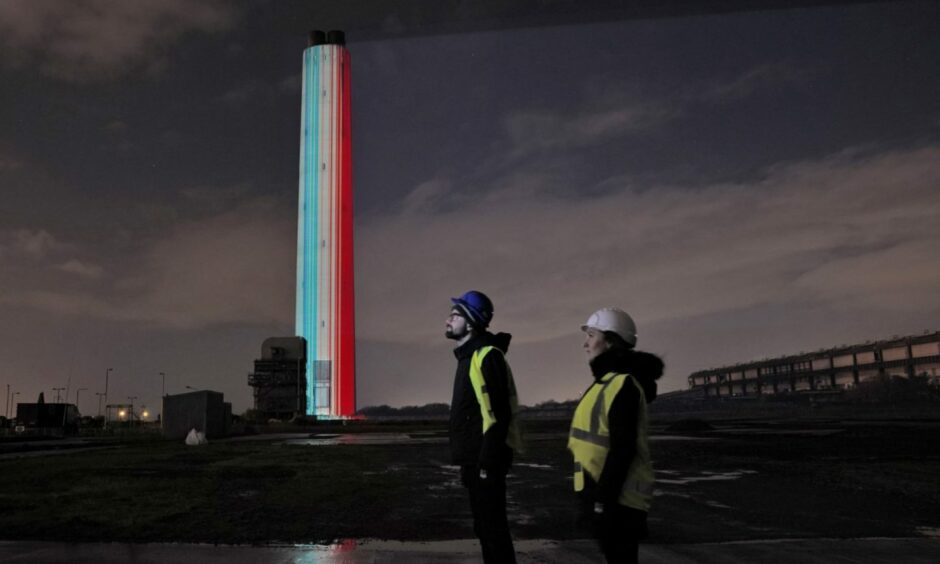The final remnant of Scotland’s last coal-fired power station will be razed when Longannet’s chimney stack is blown to the ground.
ScottishPower will demolish the 600ft stack, which has dominated the Forth skyline for decades, on Thursday morning.
Longannet was once the largest power station in Europe and the stack is the largest free-standing structure in Scotland.
But in 2003 the power station was also named Scotland’s biggest polluter.
It topped a league table of the Scottish Environment Protection Agency’s top pollution blackspots.
Longannet was one of Europe’s biggest polluters
Before it stopped producing electricity from fossil fuels in 2016, Longannet was Scotland’s last remaining coal-fired power station.
The disappearance of the stack from the skyline is symbolic of the move away from coal power generation, and the need to address the climate emergency.
Two years before its closure, Longannet was named one of ‘Europe’s Dirty 30’ in a report by WWF and other agencies.
At the time, the UK’s nine ageing power stations produced just under a third of the country’s electricity supply. But they were responsible for nearly two thirds of the energy sector’s carbon emissions.
In the days before the stack’s demolition, ScottishPower illuminated the landmark with coloured stripes.
The display symbolised the rise in global temperatures since industrialisation took off in the mid 19th century.
ScottishPower’s chief executive Keith Anderson said: “The global warming stripes remind us why the UK needs faster action and greater ambition to meet net zero emissions targets and help save our planet.”

The slogan “Make Coal History” was also projected on to the chimney.
ScottishPower has pledged to invest in new solar, wind and battery infrastructure, and green hydrogen facilities.
“Scotland has been coal-free since we closed down Longannet in 2016 and today we’re calling on everyone to join us in making coal history once and for all.”
Chimney to come down just weeks after COP26 climate summit
The removal of Longannet’s last remaining structure marks the end of 50-years of fossil fuel burning dominating the landscape.
And it follows the COP26 climate summit in Glasgow.
When it was in operation, Longannet guzzled an eye-watering 4.5 million tonnes of coal per year.
It was ideally located, next to the coalfields of Fife.
Longannet Colliery supplied it with fuel until its closure in 2002. Coal deliveries arrived by road or the Longannet railway line.
There are now plans to reopen the old Longannet railway – for passengers this time. This would provide a link between Alloa and West Fife.
What next on the horizon at Longannet?
Before it closed, it was a important source of employment for the surrounding communities. It supported a workforce of 370 and employed many more through the supply chain.
The redundancies were a blow to the local economy.
But last year, Spanish engineering firm Talgo reaffirmed its commitment to bringing the Longannet site back into use.
Talgo has struck an agreement with Scottish Enterprise and Transport Scotland to transform the site near Kincardine into a manufacturing hub for high speed trains.











